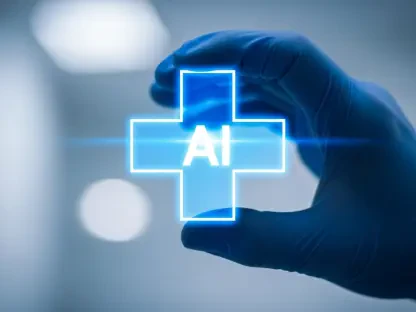Imagine a world where a patient’s medical history is instantly accessible to any healthcare provider, regardless of location or system, enabling swift, informed decisions during a critical emergency. This vision, once a distant dream, is inching closer to reality through advancements in Health IT interoperability, which promises to transform the healthcare landscape by addressing the delays and frustrations caused by fragmented data systems. In an era where seamless exchange of health information is vital, this review delves into the intricate landscape of Health IT interoperability, exploring its core components, recent innovations, real-world impact, and the challenges that still lie ahead in reshaping the healthcare ecosystem.
Defining the Concept of Seamless Data Exchange
Health IT interoperability refers to the ability of disparate health information systems and software applications to communicate, exchange, and utilize data effectively. At its core, it aims to eliminate the barriers created by isolated data silos, ensuring that patient information flows freely across platforms. This capability is pivotal in a healthcare landscape increasingly driven by digital transformation, where the need for coordinated care and patient empowerment grows ever more urgent.
The emergence of interoperability aligns with broader technological trends, such as the rise of cloud computing and mobile health applications. It addresses a longstanding issue in healthcare: the inability of systems to “talk” to one another, often resulting in incomplete patient records or redundant testing. By fostering a unified approach to data sharing, interoperability promises to enhance clinical outcomes and streamline administrative processes.
Its relevance extends beyond mere technical integration, touching on ethical imperatives like patient autonomy. When individuals can access and share their health data effortlessly, they gain greater control over their care decisions. This shift underscores the importance of interoperability as not just a technological advancement, but a fundamental step toward a more equitable and responsive health system.
Key Elements Driving Interoperability
Electronic Health Records (EHRs) and Their Role in Data Sharing
Electronic Health Records (EHRs) serve as the backbone of interoperability, acting as digital repositories for patient data that can be shared across healthcare settings. These systems capture everything from medical histories to lab results, enabling providers to access comprehensive information at the point of care. The potential of EHRs to improve decision-making is immense, as they reduce the risk of errors stemming from incomplete or outdated records.
However, the performance of EHRs in facilitating data exchange varies widely due to compatibility issues among different vendors and platforms. Many systems still operate in isolation, unable to integrate seamlessly with others, which hampers the goal of universal access. Despite these hurdles, ongoing efforts to standardize data formats and protocols are gradually improving the ability of EHRs to function as cohesive tools in care delivery.
The impact of EHR interoperability is evident in scenarios where timely access to records can mean the difference between life and death, such as in emergency departments. Yet, achieving true universality remains a complex challenge, requiring not only technical solutions but also widespread adoption and cooperation among stakeholders in the healthcare sector.
Standardization Frameworks and Their Importance
Standardization frameworks, such as the CMS Interoperability Framework, play a critical role in aligning disparate health IT systems under a common set of protocols. These frameworks establish guidelines for how data should be formatted, stored, and shared, ensuring consistency across platforms. Their adoption is essential for creating a network where information can move without friction, regardless of the technology in use.
The performance of these frameworks is often measured by their ability to bridge gaps between legacy systems and modern applications. For instance, the CMS Interoperability Framework, highlighted at a significant White House event titled “Make Health Tech Great Again,” has gained traction with commitments from numerous networks to meet its requirements. This voluntary alignment signals a growing recognition of the need for unified standards in achieving systemic change.
Real-world adoption of such protocols is gaining momentum, with major technology and healthcare companies pledging to integrate these standards into their operations. This collective push helps address technical disparities and fosters an environment where data sharing becomes the norm rather than the exception, paving the way for more efficient healthcare delivery.
Latest Innovations Shaping the Field
Recent advancements in Health IT interoperability reflect a dynamic shift toward integrating cutting-edge technologies and collaborative models. A notable milestone is the introduction of the CMS Interoperability Framework, unveiled at a landmark White House event that united over 60 leading companies in a shared mission. This initiative emphasizes voluntary cooperation, encouraging stakeholders to prioritize patient access to data through standardized systems.
Emerging trends also include the incorporation of artificial intelligence (AI) into health data platforms, enhancing capabilities like predictive analytics and personalized care recommendations. AI-driven tools are beginning to streamline processes that once relied on manual input, offering new ways to interpret and utilize health information. Alongside this, the development of secure digital identity credentials is addressing privacy concerns, ensuring that data exchange remains both accessible and protected.
Industry behavior is evolving as well, with a noticeable move toward partnership over competition. Companies are increasingly committing to collaborative goals, such as delivering measurable outcomes within the next couple of years, from now until 2027. This shift in mindset, coupled with technological innovation, suggests that interoperability is on the cusp of becoming a cornerstone of modern healthcare infrastructure.
Practical Impacts and Implementations
Interoperability is already making tangible differences across various healthcare sectors, demonstrating its value through practical applications. In clinical settings, AI-powered tools are being deployed for tasks like symptom assessment and appointment scheduling, reducing administrative burdens and improving patient experiences. These innovations allow individuals to engage with their care in ways that were previously unimaginable, cutting down on wait times and enhancing access.
Another significant use case is the replacement of traditional paper forms with digital check-in platforms at medical facilities. This transition not only saves time but also ensures that data is captured accurately and integrated into broader systems for future reference. Additionally, applications designed for managing chronic conditions, such as diabetes, empower patients with real-time insights and support, fostering better self-management and outcomes.
Notable commitments from major industry players, including technology giants and healthcare networks, further illustrate the reach of interoperability. At the aforementioned White House event, numerous organizations pledged to advance these technologies, focusing on creating a patient-centric digital ecosystem. Such initiatives highlight how interoperability transcends theoretical benefits, delivering concrete improvements in how care is accessed and provided.
Barriers and Constraints to Overcome
Despite its promise, Health IT interoperability faces significant obstacles that must be addressed to realize its full potential. Technical challenges, such as inconsistent data formats and incompatible systems, continue to hinder seamless exchange, often requiring costly and time-intensive solutions. These issues are compounded by the sheer diversity of technologies in use across the healthcare spectrum.
Regulatory and ethical concerns also pose substantial barriers, particularly around data privacy and security. Ensuring that sensitive health information remains protected while expanding access is a delicate balance, with strict compliance requirements often slowing progress. Market resistance from entrenched interests further complicates the landscape, as some stakeholders may prioritize proprietary systems over open, interoperable ones.
Efforts to mitigate these limitations are underway, with initiatives focusing on secure digital credentials and collaborative frameworks to promote equitable access. Addressing disparities across demographics and regions remains a priority, as does fostering trust among users regarding data handling. Overcoming these hurdles will require sustained investment and a willingness to adapt to evolving standards and expectations.
Prospects for the Future of Data Integration
Looking ahead, the trajectory of Health IT interoperability appears poised for significant breakthroughs, particularly with the integration of AI and enhanced data security measures. AI has the potential to not only improve data analysis but also predict system vulnerabilities, offering proactive solutions to interoperability challenges. Such advancements could redefine how healthcare providers interact with and utilize patient information.
Broader adoption of standardized frameworks is anticipated in the coming years, with many expecting substantial progress by 2027. This expansion will likely drive down costs associated with fragmented systems, making healthcare more efficient and accessible. The long-term impact could include a fundamental shift in care delivery, where patients are at the center of a fully connected digital health environment.
Beyond technology, the societal implications are profound, promising greater patient empowerment and reduced disparities in care access. As interoperability matures, it could catalyze innovations in telemedicine, remote monitoring, and personalized medicine, reshaping the industry for generations. The focus now must be on building robust, scalable systems that can adapt to future needs and challenges.
Reflecting on the Journey and Next Steps
Looking back, the strides made in Health IT interoperability mark a turning point in how healthcare systems approach data sharing and patient care. The collaborative spirit ignited by industry commitments and government initiatives has laid a strong foundation for change, while innovations like AI integration showcase the potential for technology to solve longstanding issues. Each advancement, from EHR improvements to standardization frameworks, contributes to a more connected health landscape.
Moving forward, the emphasis shifts to actionable strategies that can sustain this momentum. Stakeholders need to prioritize investments in secure, user-friendly technologies that bridge remaining gaps in system compatibility. Equally important is the push for policies that safeguard data privacy without stifling innovation, ensuring that all populations can benefit from these tools.
A critical next step involves fostering education and trust among both providers and patients about the value and safety of interoperable systems. By building on the lessons learned, the healthcare community has the opportunity to create a truly integrated ecosystem—one where technology empowers every individual to achieve better health outcomes. This vision, though ambitious, remains within reach with continued dedication and partnership across sectors.









